Rudy and Fredy Walker, c.1903 French S.I.P. postcard series #142, “Le Cake-Walk”
_______________________________
originally published on 1 Mar 2012; latest edit, 3 September 2023
________________________________
See my index of pages on the young sibling cakewalk dancing team, Rudy and Fredy Walker:
- # 142/1
- # 142/2
- # 142/3
- #142/4
- # 142/5
- # 142/6
- # 142/7
- #142/8
- #142/9
- #142/10
(above) Complete set of ten c. 1903* French S.I.P.** postcards, series #142: “Le Cake-Walk, Dansé au Nouveau Cirque, Les Enfants Nègres,” featuring juvenile brother and sister dance team the Walkers. The pair was photographed in various cakewalk dancing poses. The poses might have been found in, or representative of, a routine they were then performing at the Nouveau Cirque in Paris. All images edited digitally by doc.
The dancers, who were known professionally as The Walkers but billed as Les Enfants Nègres at the Nouveau Cirque in Paris, are identified as siblings Ruth “Rudy” and Frederick “Fredy” Walker in an article about them I found in the Oxford African American Studies Center.
[At last check, 19 June 2012, this article was not found, having evidently been moved or removed. However, it is available at a primary source. See the relevant exchange of comments at the bottom of this page with the author of the piece, Dr. Rainer E. Lotz.]
From the biographical sketch of the Walkers by Dr. Lotz:
Ruth “Rudy” and Frederick “Fredy” Walker (31 Aug. 1891–after 1928) and (9 Nov. 1893–May 1977) [respectively], known as The Walkers, song and dance entertainers and actors, were both born in Chicago. It appears that at some time in 1902 the two juvenile dancers, brother and sister, traveled to Europe in the company of their mother, Ella Walker, herself an artist, born in Chicago in [1860 or 1864], according to her own conflicting statements.
That they traveled with their own mother is mentioned in June 1903 and again in the winter 1904/1904 in Vienna, December 1906 in Stockholm, in November 1907 in Berlin, and again in February 1908 in Copenhagen. Billed as “Les Enfants Nègres,” their presentations of the cakewalk dance attracted a lot of attention at the Nouveau Cirque at Paris and paved the way for a long career in Europe. They became so popular that they inspired a composer, a sculptor, and a movie film director, as well as cartoonists.***
Their portraits appear on many postcards; in fact, they might well be the most often photographed black entertainers of the period. The cards show them in various dance poses—sometimes together and sometimes solo. Mostly they wear tall, calf-length socks and white dance shoes. The boy wore a white dance costume or gymnast’s suit with a black sash, whereas the girl wore a short skirt.
In his brief biography of the Walkers, Dr. Lotz indicates that there was a short film produced featuring Rudy and Fredy Walker (as “Les enfants nègres”), and several other cakewalk artists, performing on the stage of the Nouveau Cirque:
It was presumably the French Pathé company that produced a short film featuring the cake walk performances by both black and white artists on the stage of the Nouveau Cirque. All the artists that can be seen in the film also had a series of postcards devoted to them. They are “Les enfants nègres,” with ten postcards in series 142 (by early 1904 motifs of the original French series 142 were marketed in the United States by Franz Huld, Publisher, New York, in their series III “Cake Walk—Negro Dance”), “Les Soeurs Pérès” from Spain (postcard series 143), “Les Nègres” from the United States (series 144), and “The Elks”, also from the United States (postcard series 145). Charles Gregory also had his own series of postcards, but he is not identified by name and the cards simply state “Nègre Joyeux.”
Clips from the “short film” described by Dr. Lotz above are combined in a video I recently found. Except that the clips come from a series of five short films, not one, and they were made by Louis Lumière, not the French Pathé company as suggested by Dr. Lotz. Also there are five teams of cakewalk dancers in the series, not four.
See the following Songbook page, containing the aforementioned video:
 In 1903, an illustration by Louis-Lucien Faure Dujarric (signed “L. Lucien Faure”) for the sheet music cover of a cakewalk titled Joyeux nègres (right), by French composer Rodolphe Berger, featured a cakewalk dancing pair closely resembling the Walkers as they appeared while performing at the Nouveau Cirque in that year.
In 1903, an illustration by Louis-Lucien Faure Dujarric (signed “L. Lucien Faure”) for the sheet music cover of a cakewalk titled Joyeux nègres (right), by French composer Rodolphe Berger, featured a cakewalk dancing pair closely resembling the Walkers as they appeared while performing at the Nouveau Cirque in that year.
The Dr. Lotz article also notes that at least two more series of postcards featuring Rudy and Fredy Walker were issued in 1904:
A further set of postcards was soon issued as giveaways by a French journal, Le Sans-Souci in 1904, and in that year yet another set of cards were marketed, on which the Walkers demonstrated “Le Trans-Atlantic. Nouvelle Danse américaine au Nouveau Cirque”—the novelty of the cakewalk had worn off with regular patrons of the Nouveau Cirque and a new dance had to be introduced and new costumes tailored.
Images of four of the cards from the “Le Trans-Atlantic“ set may be found on the following Songbook page:
__________________
(above) A composite image containing two covers and a page of the music review Paris qui Chante, c.1903, reflecting the cakewalk fashion of the season. The rightmost panel, a copy of page 7 of the 31 January 1903 issue of the revue Paris qui Chante (1ère année, n°2), includes a montage of photos featuring Rudy and Fredy Walker, possibly from a postcard series issued by the French journal Le Sans-Souci in 1904. In these images, the siblings appear to wear the same outfits worn in the c. 1903 French S.I.P. series #142 set of ten postcards. While performing at Le Nouveau Cirque in 1903, the Walkers were billed as Les Enfants Nègres.
(above) A 1903 poster created by French artist Maurice Mahul advertises performances of Le Cake-Walk at Le Nouveau Cirque in Paris. The poster features an illustration depicting Rudy and Fredy Walker cakewalk dancing. Showtime: Wednesdays, Thursdays, Sundays, and holidays, matinée at 2:30.
Another excerpt from the Dr. Lotz profile of the Walkers (Oxford AASC article):
The “Enfants Nègres” moved from Paris to Belgium, perhaps also the Netherlands, and back to France. In publicity they are henceforth referred to by their first names and variations thereof: Fred, Fredi, Fredy, or Rudy, Ruddy, Rudi, Roudy, and Ruth, respectively, and on one occasion Pandy & Fredy. A reviewer at Antwerp, Belgium, noted that they sang as well as danced. If they briefly returned to the United States, as they later stated in a passport application, they left no trace on passenger lists and resurfaced in Scandinavia in 1906
____________________________
* Evidence supporting a date of c. 1903 for the French S.I.P. postcard series #142, “Le Cake-Walk, Dansé au Nouveau Cirque, Les Enfants Nègres”:
- The great similarity of the costumes and physical appearance of the pair in the #142 series of postcards to that in the short film of the Walkers by Louis Lumière, which is dated “[hiver 1902-1903] – 15 mars 1903” in the “Le Cake-Walk” page on the series at Catalogue Lumière, tends to support a date for the postcards not very distant from the span December 1902-March 1903.
- A 1903 poster created by French artist Maurice Mahul (see above) includes an illustration of the Walkers wearing costumes very similar to those worn in the French S.I.P. postcard series #142.
- An illustration resembling the pair, by L. Lucien Faure, in which the dancers are depicted wearing costumes very similar to those worn in the French S.I.P postcard series #142, and in the 1903 Mahul illustration, appears on the cover of sheet music for a 1903 cakewalk titled Joyeux nègres, by French composer Rodolphe Berger (see above right).
- The Helen Armstead-Johnson theater photograph collection of the NYPL Digital Gallery has copies of three of the cards. One of the three is tinted and retouched. The two otherwise apparently unaltered images are each inscribed with the date 1903.
** S.I.P. — Societe industrielle de photographie, the publisher
*** “They became so popular that they inspired a composer, a sculptor, and a movie film director, as well as cartoonists.“
- composer: Rodolphe Berger (see above); possibly also Debussy (see the article “Debussy’s Cakewalk: Race, Modernism and Music in Early Twentieth-Century Paris,” by James Deaville, in volume 2, n° 1, janvier 2014 of Revue musicale OICRM)
- sculptor: Carl Kauba — see the page
- movie film director: Louis Lumière — see the page
- Le Cake-Walk au Nouveau Cirque (1903) by Louis Lumière: five short films of cakewalk dance teams performing on stage, including one featuring Rudy and Fredy Walker
- cartoonists(?): — Perhaps Dr. Lotz means illustrators such as L. Lucien Faure and Maurice Mahul (see above).


















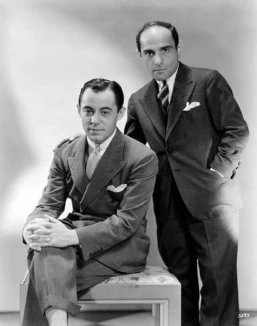

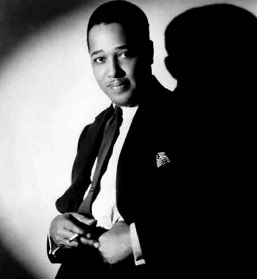


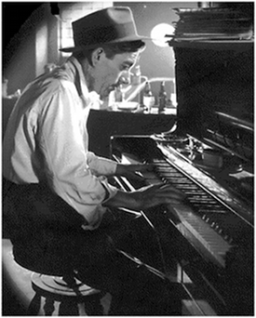
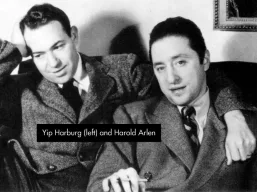




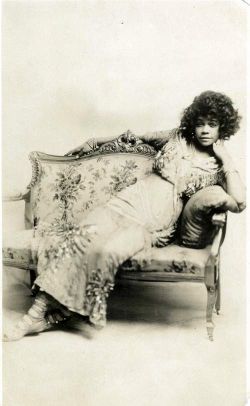










Jan 08, 2013 @ 02:30:58
Glad you liked my brief contribution to Oxford on the Walkers.
You will find full details, and more images, here:
Rudy & Fredy Walker – ‘Les enfants nègres’ – in Europe
Hilversum, Doctor Jazz Magazine, Vol.44, 192, maart 2006, pp.9-23.
They will also be dealt with in the forthcoming BLACK EUROPE, look it up here
black-europe.com [link fixed by doc, 18 July 2017].
Regards
Rainer E. Lotz
LikeLiked by 1 person
Jan 08, 2013 @ 11:57:53
Thanks for the information Dr. Lotz. I’ll include your name as author of the Oxford quotes ASAP. If your name was attached to the piece, I missed it. Haven’t been able to relocate that article for some time. I’ll look for that Doctor Jazz Mag article. Is it online?
Regards,
Jim Radcliff
LikeLike
Jan 10, 2013 @ 14:06:53
Apologies for a belated reply.
I had to delve into my old files, and can now confirm that my original contribution was in 2007 for the AANB, the African American National Biography. The information that you refer to is surely based on that entry. Could it be that somebody else published this under another author’s name? Astounding, as it took me decades to research the facts.
The AANB is a concise, capsule summary. More detailed information is in my essay for Doctor Jazz Magazine.They have a website
But I am afraid the contents cannot be researched online. I am sure they will send you the article, or the entire issue, if you ask for it. The gentleman in charge is Ate van Delden. He speaks fluent English. If this does not work out I could check my own copy of the magazine and prepare pdf documents.
And yes, putting up a link would be brilliant!
Keep the good work up!
Best regards
Rainer E. Lotz
LikeLiked by 1 person
Jan 10, 2013 @ 21:34:43
Dr. Lotz,
There appears to be some connection between the AANB and the OAASC, but I don’t what that connection is. There is a page in the AANB Online site titled AANB ONLINE ONLY January 2012 [link fixed on 23 March 2014], which includes a link to the OAASC above its list of “Published Online” and “Pending Online Publication” entries. Most of these look like authors names, but Rudy and Fredy Walker is in the “Published Online” list.
As I mentioned previously, I don’t know whether the article that I found at OAASC sometime around 1 March 2012 had your name, or any other name for that matter, attached to it as author. It certainly would have been my usual practice to include the author’s name, if any was given, in my initial citation of the source.
Unfortunately, I didn’t keep a copy of the entire piece, and its been unavailable since June 2012 (if not earlier). Actually, I recall that I had to use a cache, a Google cache, to read it in March 2012. That is, apparently it already been deleted from OAASC at, or shortly after, the time that I found it, 10 months ago. I don’t ordinarily save copies of entire articles which I can easily link to, but I wish I’d made an exception in this case, especially since it was a cache and likely to be removed any day.
Thanks for the info regarding acquisition from Doctor Jazz Magazine. I might place a request with Herr van Delden.
Would you be willing to respond to some questions that have arisen regarding images of the Walkers? Unresolved issues include:
1. Precise dating of the photos, of the postcards, and of the Carl Kauba bronze sculpture. It appears that Kauba used as models two of the postcards, #142/2 and #142/6, featuring Rudy and Fredy, respectively. See the side by side comparison, above.
2. The Oxford AASC article (your article) also noted that at least two more series of postcards were issued in the year following (1904?) the publishing of the first set. One of these was a set in which the Walkers demonstrate “Le Trans-Atlantic,” their latest dance at the Nouveau Cirque. So far I’ve found only four of this set. Are there more? The other set mentioned was said to have been issued as giveaways by a French journal, Le Sans-Souci, in 1904. I’ve found no trace of the latter set, thus far.
Warm regards,
Jim Radcliff
musicdoq@gmail.com
LikeLike
Jan 11, 2013 @ 06:22:03
You will find the answers to your various queries in the Doctor Jazz Magazine essay, along with images.
All the best in haste
Rainer E. Lotz
LikeLiked by 1 person
Jan 13, 2017 @ 09:45:53
Thank you for great information on untold Black History
LikeLiked by 1 person
Jan 13, 2017 @ 11:21:17
Marie,
You’re welcome!
Regards,
doc
LikeLike
Jul 19, 2017 @ 01:34:53
I understand the work – BLACK EUROPE – may now be out of print.
Rainer
LikeLiked by 1 person
Jul 19, 2017 @ 13:44:44
Hi Rainer,
Nice to hear from you! Thanks for the update.
doc
LikeLike